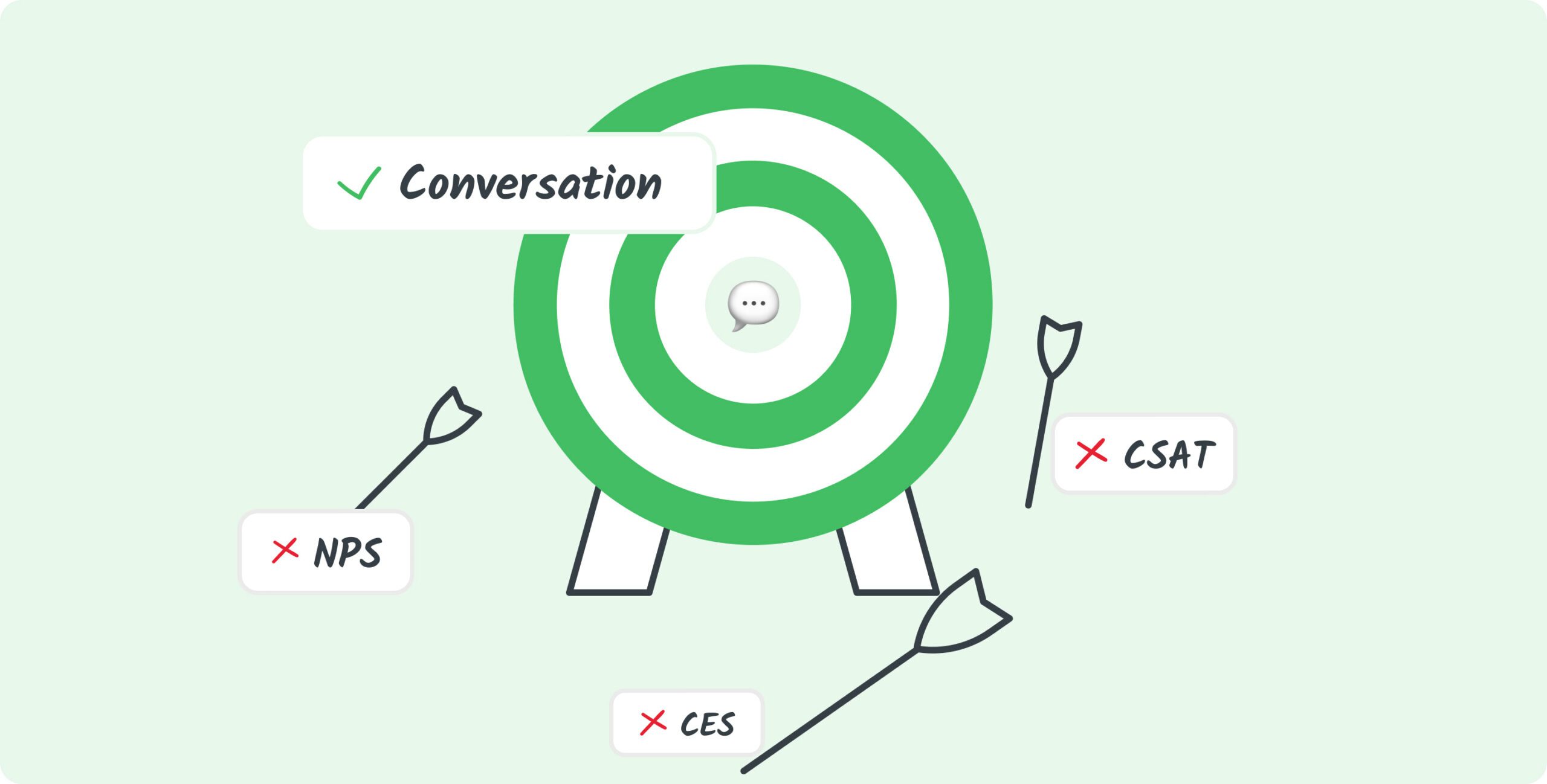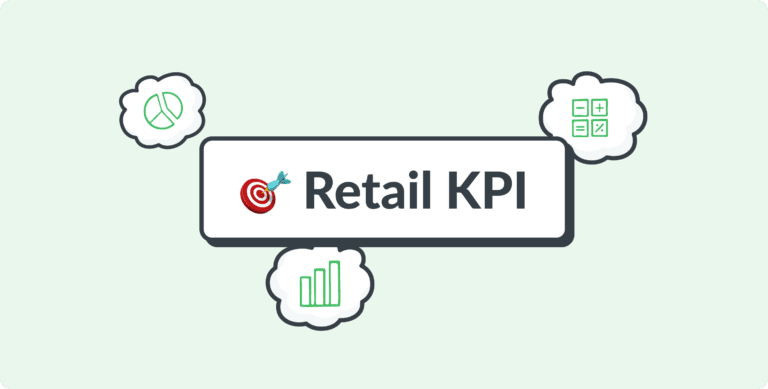Customer satisfaction metrics are an important part of building a service-oriented business. By tracking satisfaction scores over time, you can spot patterns and trends in customer experiences. Having clear benchmarks provides your team with clarity and a goal to work towards.
But the metrics don’t tell the whole story. Placing too much focus on the numbers alone can cause problems down the line.
🙅♂️
“When a measure becomes a target, it ceases to be a good measure.”Goodhart’s Law
Goodhart’s Law comes from economics, but it applies across the board in the world of business. When we fixate on numerical targets, we create a distortion: we start chasing the number instead of the real-world improvement that that number represents.
The service we provide inevitably suffers as a result.

Some managers shift their focus exclusively to increasing their CSAT, NPS, or CES score. This leads to a skewed understanding of what the customer really wants. The customer may be incentivized (or even pressured) to leave a positive score. There’s also the risk of biased interpretation of feedback that discounts negative responses.
Scenario 1
A company ties employee promotions to achieving high NPS scores.
😅 What it can lead to
Feedback from NPS promoters gets prioritized, while detractors don’t get enough attention.
🙌 What to do instead
Don’t tie company-wide metrics to specific employee performance. Instead, pay attention to post-survey followup questions: if a specific employee contributed to the score (in a positive or negative way), the customer will let you know!
Scenario 2
Agents are evaluated based on CES scores for customer service interactions.
😅 What it can lead to
They resort to quick, easy solutions that don’t address the underlying issue.
🙌 What to do instead
Look at the qualitative data associated with the relevant point in the customer journey. Find out what exactly is decreasing ease-of-use for the customer, and then decide if the complexity is necessary. CES requires a nuanced approach!
Scenario 3
The success team’s performance depends on improving their CSAT by the end of the quarter.
😅 What it can lead to
The team starts directly influencing customers: asking for a perfect rating, offering perks in exchange for positive feedback, sending out surveys with biased language, etc. This can clash with the company’s goals and values, as well as diluting the data.
🙌 What to do instead
Make sure you’re monitoring how your agents are communicating with clients and offering/introducing the survey. Your goal is to ensure a consistent approach across the organization.
Note: Sometimes it’s useful to offer perks or use biased language! But the decision can’t be on individual agents.
None of this decreases the significance of CSAT, CES, and NPS surveys. It just means managers need to pay attention to how the data is used.
Ensure your feedback interpretation is well-rounded
How do you stop a useful customer satisfaction metric from becoming a target?
👐 Foster a culture of transparency and honesty: Communicate with your team, and make sure they understand the importance of genuine customer interactions.
📝 Collect qualitative data: Let customers describe in their own words what they enjoy about your company – or what they find lacking! Alongside grading you on a numerical scale, many customers appreciate the opportunity to share an opinion. Qualitative feedback helps you gain a more holistic understanding of how certain decisions in your company are being perceived.
🔎 Focus on understanding underlying drivers: Instead of fixating solely on numerical scores, take the time to understand the factors driving customer (dis)satisfaction. Follow-up questions are a great help in performing root-cause analysis.
📉 Keep reassessing and refining metrics: Remember that customer needs and preferences evolve over time! That means you need to stay agile, altering your surveys and survey interpretation approaches when necessary. This might mean a temporary decrease in your average score. That isn’t always a bad thing: check out our guide on how (and why) to lower your feedback score!
🌳 Build relationships that last: how you respond to feedback is even more important than the feedback itself. A less-than-perfect score can be a gateway to a long-lasting customer relationship. By reaching out and addressing the cause of dissatisfaction, you offer direct proof that your company values each customer – even (especially!) dissatisfied ones. Remember the service recovery paradox: a mistake can actually increase customer loyalty, if you handle it the right way.
💬 Customer feedback starts a conversation, and it’s on you to continue it. If you reduce feedback to just a numerical target to reach and beat, you’re stifling your company’s potential for improvement
About Simplesat: Simplesat is the leading omnichannel survey app designed to enhance customer feedback management across various platforms, including Zendesk, Salesforce, and Gladly. Trusted by businesses worldwide, Simplesat delivers actionable insights that drive business growth and customer satisfaction.















